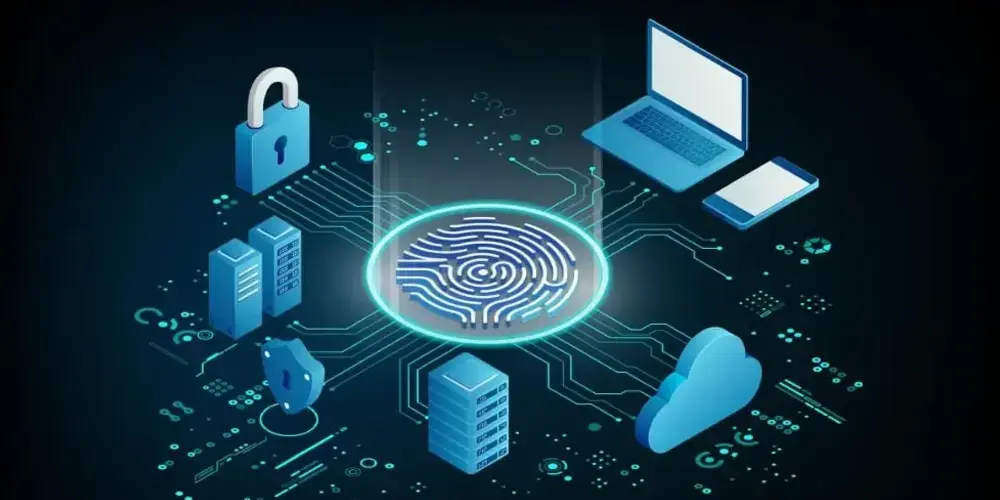
Envision a promising technology startup awakens to chaos one morning. Their customer data stored in the cloud has been compromised. Their sensitive information is also exposed. Panic erupts as the team rushes to determine how it occurred and what went awry in their cloud computing security architecture. This is not merely a nightmare scenario today. Instead, it is a harsh reality for numerous businesses.
Enter cloud forensics, the unsung champion in cybersecurity. This advancing field delves deeply into the digital traces left in cloud environments. This lets organisations investigate data breaches and fortify their defences for the future. Let us explore its significance.
Understanding Cloud Forensics

Well, cloud forensics is basically the procedure of amassing, analysing, and preserving digital evidence from cloud environments. Unlike traditional forensics, it typically focuses on data from local devices. Cloud forensics must also consider the complexities of shared resources and multiple jurisdictions. Moreover, it addresses the dynamic nature of cloud architecture in cloud computing.
Why is Cloud Forensics Important?
The transition to the cloud has transformed the way organisations function. However, it has also brought forth new hazards. The 2023 Thales Cloud Security Report revealed that 39% of companies reported encountering a data breach in 2022. Many of these events took place in cloud environments. This figure highlights the significance of having a strong strategy for cloud security in cloud computing. It also emphasises the necessity for effective cloud forensics to examine any breaches that take place.
Exploring Data Breaches in Cloud Computing
- Understanding the Components of a Data Breach
Data breaches in cloud computing may happen in diverse ways:
➩ Unauthorised Access: Cybercriminals can exploit weak passwords or incorrect access settings to break into cloud systems.
➩ Insider Threats: Sometimes, employees with proper access may misuse their permissions and share sensitive information.
➩ Insufficient Security Measures: Numerous organisations neglect to implement adequate cloud computing security protocols. This leaves them exposed to attacks.
For instance, consider the notorious 2019 Capital One breach. A web application firewall flaw enabled an attacker to breach the personal details of more than 100 million consumers. This occurrence highlights the crucial significance of cloud security in cloud computing. It also shows the possible repercussions of insufficient safeguards.
- Investigating Data Breaches
Swift investigation is essential when a data breach takes place. Here is a general method for carrying out cloud forensics:
➩ Identification: Establish the data breach’s extent and nature. What information was compromised? How exactly did it take place?
➩ Preservation: The next step is to safeguard the impacted data to prevent further loss. This may involve creating snapshots of cloud resources to preserve the evidence.
➩ Analysis: Investigate logs and other evidence. This helps determine the origin of the data breach and its effects on the organisation.
➩ Reporting: Record the findings and compile a report detailing data breaches in cloud computing. Include its consequences and remediation suggestions.
For example, the Capital One breach revealed an attacker exploiting a cloud vulnerability. The prompt utilisation of cloud forensics helped Capital One understand the underlying data breach causes. This has let them execute corrective actions and build a robust cloud architecture in cloud computing. mCloud forensics swiftly identified and resolved the issue.
Bulletproof Your Data with these Cloud Computing Security Tips

Organisations, to lessen cloud data breaches, must go beyond basics and adopt these best practices.
- Implement Strong Access Controls
Access control is key to cloud security. Organisations should use multi-factor authentication for extra protection beyond passwords. Regularly reviewing user access ensures employees only get the resources they actually need for their roles.
For instance, a finance team member should not have access to development servers. This principle of least privilege minimises exposure in the event of a breach. Cloud providers like AWS provide Identity and Access Management tools. These tools let organisations manage user permissions granularly. This ultimately ensures strong access governance.
- Encrypt Sensitive Data
Locking down sensitive data is a must. Protect it using encryption both when idle and during transmission. The data will remain unreadable without the decryption, no matter whether hackers come to access it.
Dropbox locks down data with AES-256 encryption, whether at rest or in transit. This totally cuts down the risk of unauthorised access. Following similar encryption standards helps organisations keep their data safe from prying eyes.
- Apply Patch Management Diligently
Unpatched software weaknesses often cause cloud computing security breaches. It is important to keep operating systems, apps, and cloud platforms updated with the latest security patches. Employ automated patch management tools to guarantee that no vulnerabilities are missed.
For example, consider the 2017 Equifax data breach. It was primarily caused by the company’s failure to fix a known weakness in its systems. Careful patching could have entirely averted that data breach.
- Train Employees on Security Awareness
Human error is still one of the weakest parts of cloud security in cloud computing. Regularly teach employees how to spot phishing attempts. Emphasise the vitality of strong passwords and the proper use of cloud-powered services.
Many data breaches happen when employees accidentally share sensitive data through insecure channels. Putting forth regular training and security reminders can greatly mitigate such risks.
Conclusion
Cloud forensics investigates and tackles data breaches in cloud security. Understanding its complexities and following best practices helps organisations strengthen data protection and handle incidents efficiently. Cloud architecture plays a huge role in keeping data safe today. Smart forensic strategies are a must for maintaining security and integrity.
Delve into our CloudZenia blogs to uncover valuable insights on cloud architecture in cloud computing and broaden your understanding of cloud computing security. Stay updated and safeguard your data effectively today!

